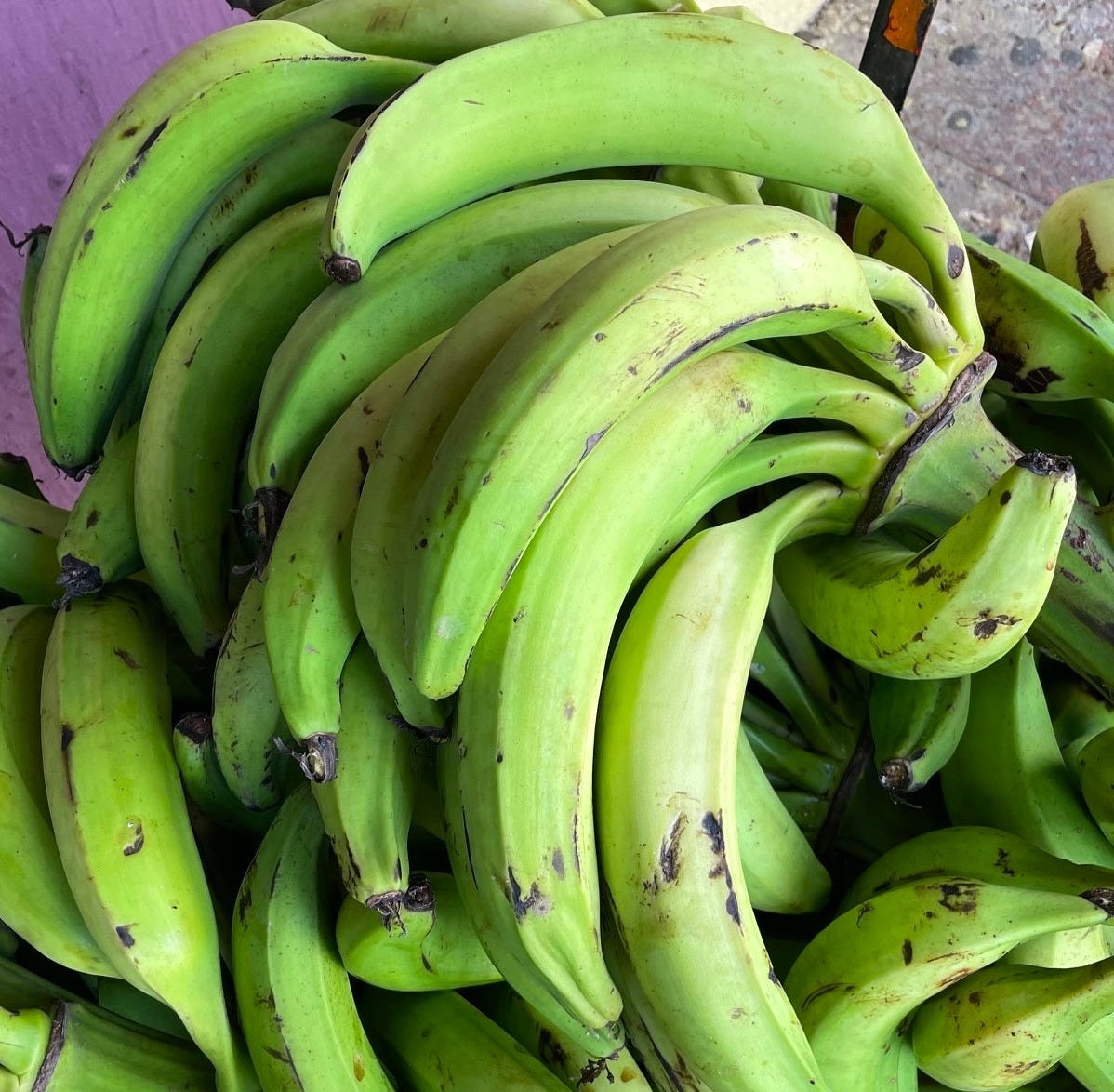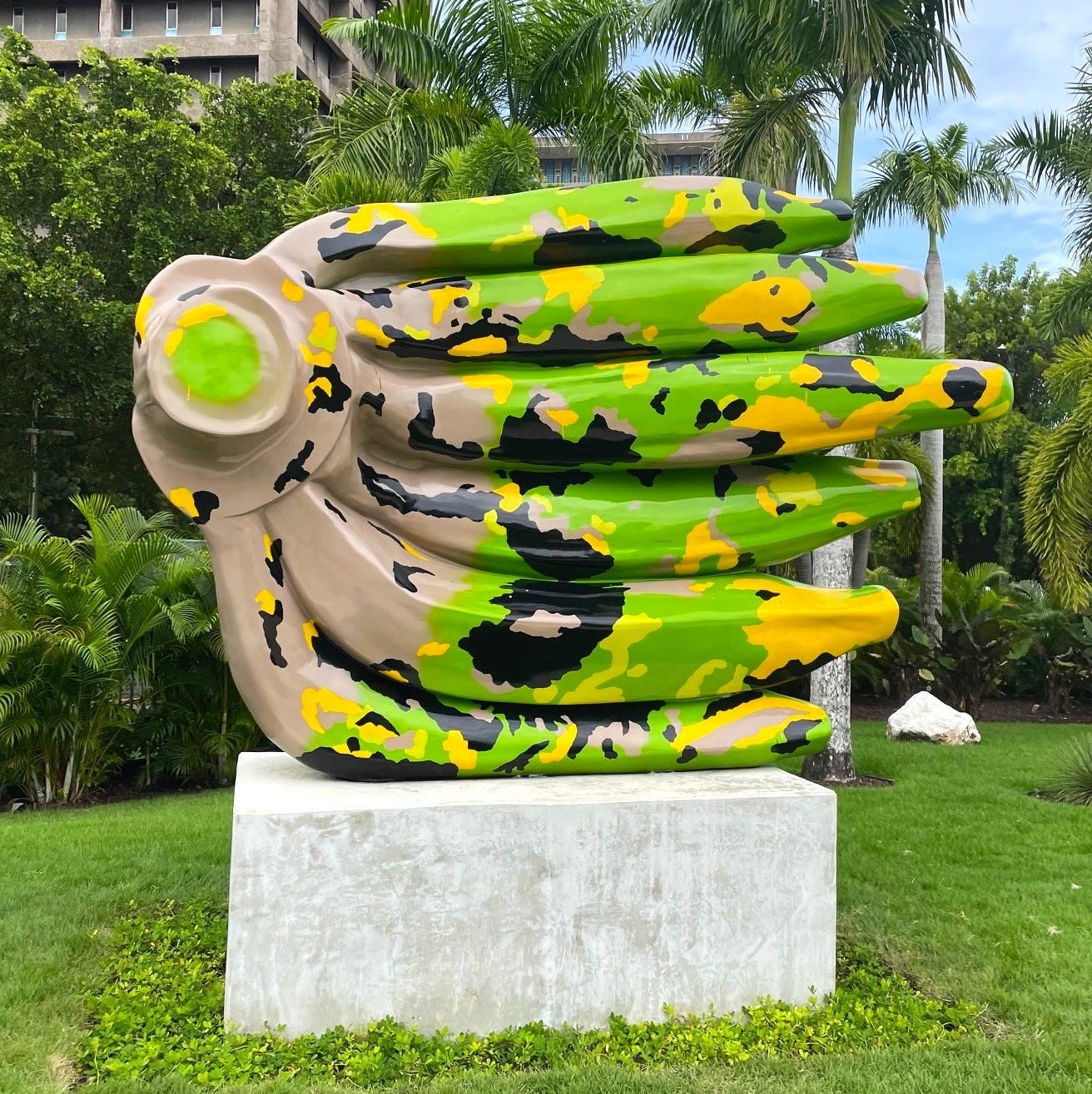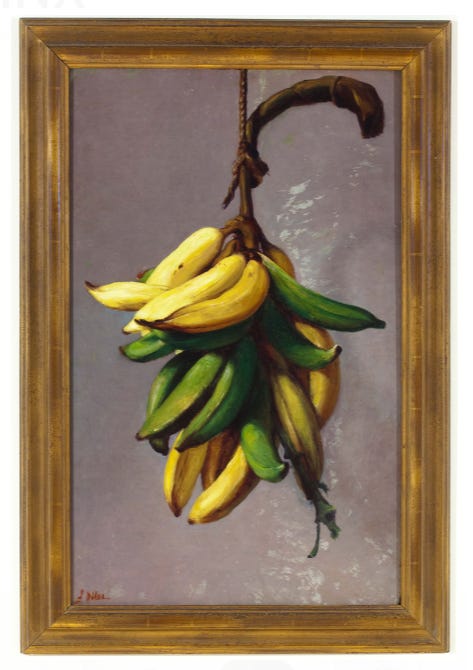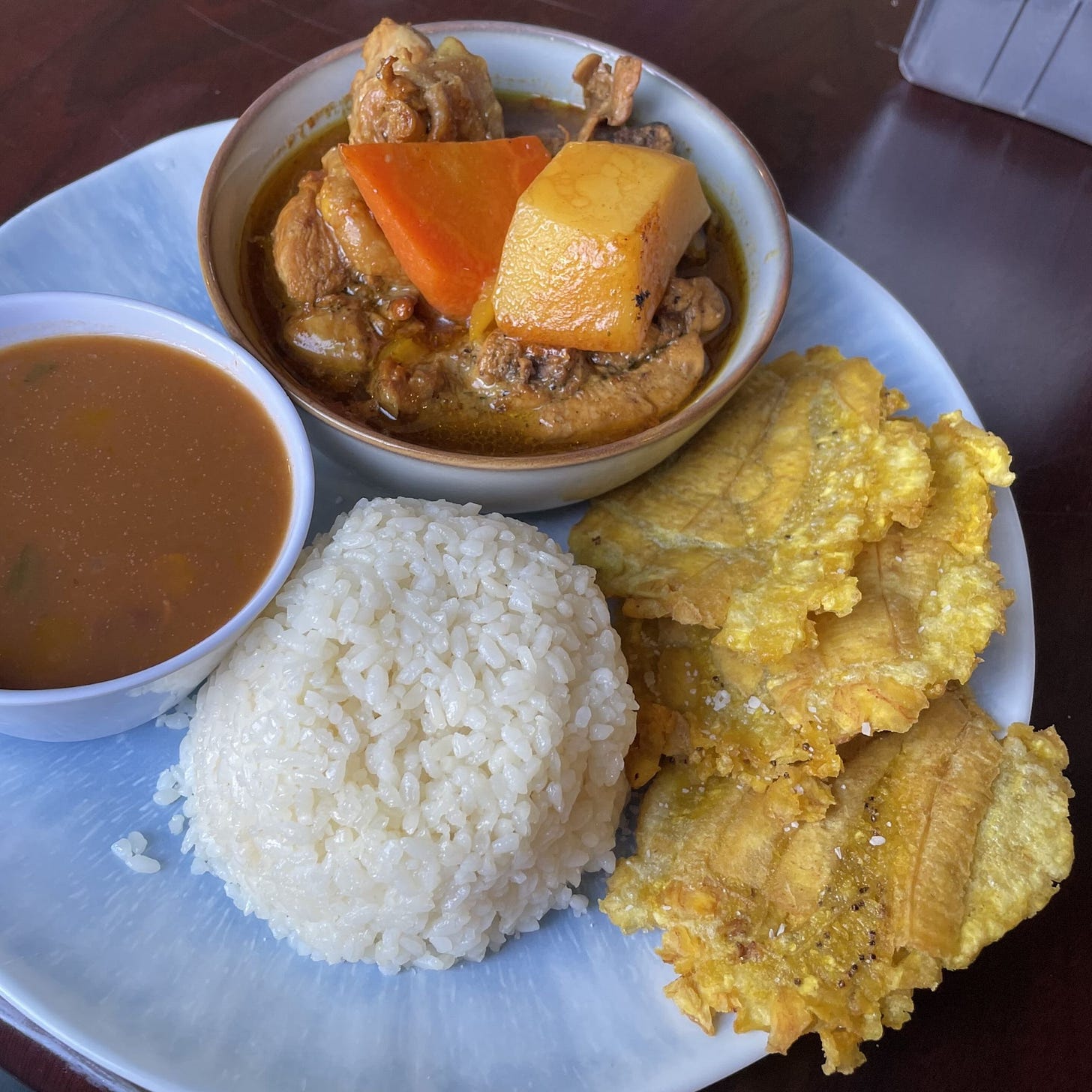Originally from Southeast Asia, plantains are larger, starchier and contain less sugar than bananas.
Plátanos are a staple in Puerto Rican cuisine, whatever stage of ripening they happen to be.
When green, we use them to make tostones, arañitas or mofongo.
When yellow, we make amarillos, canoas, pastelón or piononos.
Someone who’s very much into plantains is artist Bernardo Medina. He has captured their image on many of his paintings, sculptures and pieces of jewelry, as well as on various photographs included in his book The Sofrito Manifesto.
His latest piece is an oversized sculpture named “Downtown Plátano”, on display at the recently opened Parque Santurce, next door to the Museo de Arte de Puerto Rico.
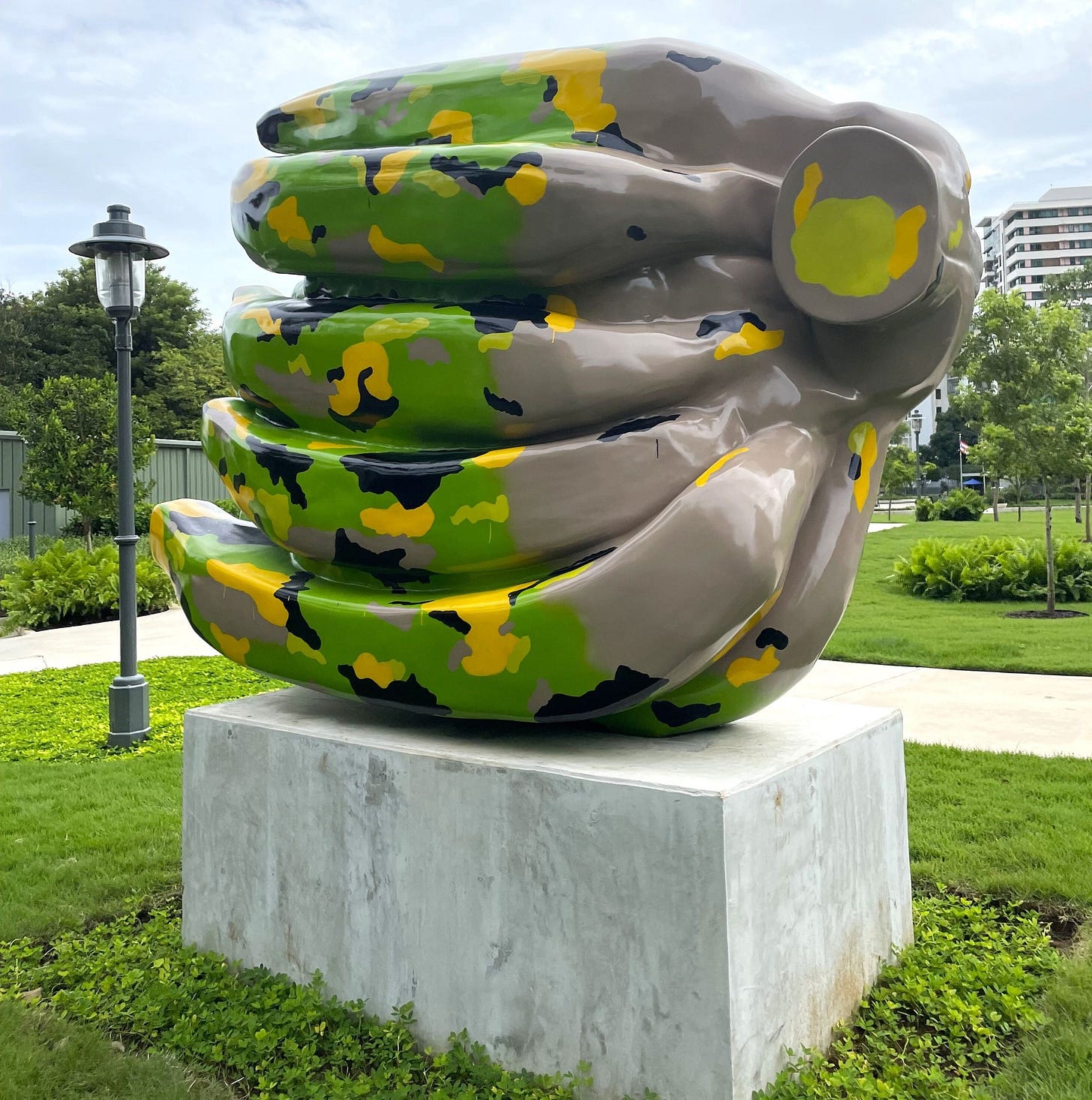
Made of fiberglass, this colorful sculpture is an example of Medina’s style - described as Jibarito Pop -, in which he takes inspiration from objects representing Puerto Rican culture to create unique art pieces that can connect with a wider audience.
Interestingly, Medina is not the first Puerto Rican to make art out of plátanos.
Considered our best 19th century artist, Francisco Oller y Cestero (1833-1917) was born in Bayamón and moved to Europe at 18 to study in Madrid and Paris.
Something he developed throughout his career was still-life painting, an artform based on recreating images of inanimate objects - food, flowers, or household items - in a way that shows the artist’s mastery of composition and technique.
Instead of painting apples, pears or grapes, as he learned in Europe, Oller chose to pay homage to the Caribbean by using fruits grown in Puerto Rico, such as guanábanas, guayabas, piñas, aguacates, and, of course, plantains.
This beautiful portrait is currently part of El Museo del Barrio’s permanent collection as a symbol/celebration of our Puerto Rican identity and cultural heritage.
Time for some tostones. Hasta la próxima.
Yanira




